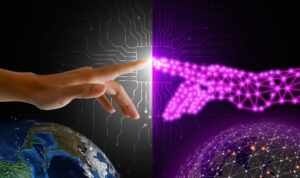As an IT professional, the growing integration of artificial intelligence (AI) and machine learning into Internet of Things (IoT) architectures, a trend known as AI-augmented IoT (AIoT) is hard to dismiss. This powerful combination enhances the capabilities of connected devices and systems, enabling real-time data processing and autonomous operation. In this article, learn about the impacts of AIoT across key sectors like manufacturing, healthcare, and smart cities. Understanding the transformative potential of AIoT will be crucial as you advise organizations on optimizing their IoT deployments and leveraging intelligent edge capabilities. With insightful examples and analysis, this piece provides IT leaders and technologists with a timely overview of how AIoT is shaping the future of IoT.
Understanding AI-Augmented IoT (AIoT) Integration
AIoT combines AI technologies like machine learning with IoT infrastructure to enable intelligent and autonomous device operation.
Enhanced Data Processing
- AIoT platforms can process huge volumes of data in real-time from multiple connected sensors and IoT nodes. AI systems analyze this data to identify patterns and insights that help optimize processes and enable predictive maintenance. For example, in a manufacturing setting, AI can detect anomalies on the assembly line and proactively address issues before they cause downtime.
Autonomous Control and Decision Making
- AI adds a layer of intelligence that allows IoT systems to dynamically adapt to changes in the environment and operate more independently. AI-enabled IoT devices can automatically adjust parameters based on sensor inputs and make control decisions without human intervention. Smart meters, for instance, can regulate energy usage during peak periods based on pricing and demand.
Personalized User Experiences
- AIoT solutions tap into customer data from IoT devices and systems to understand user behaviors and preferences. These insights are then used to provide highly customized experiences. In a smart home, AI can learn an occupant’s routines and schedule to automatically adjust lighting, temperature, and other connected systems for an optimized living environment. AIoT is a fast-growing field with many promising applications, but it also introduces risks around data security, privacy, and bias that must be addressed. With the proper safeguards and oversight in place, AI-augmented IoT can be implemented responsibly to improve our lives and society.
Key Benefits of Combining AI and IoT
AI-augmented IoT integration delivers significant benefits to many industries. By applying AI and machine learning to IoT data, businesses gain actionable insights that enhance operations, improve efficiency, and open new opportunities.
Enhanced Data Analysis
- AI systems can analyze huge volumes of IoT data in real-time, detecting patterns and insights that would be impossible for humans to uncover manually. AI identifies correlations across multiple data sources, gaining a holistic understanding of operations, environments, and user behaviors.
Predictive Maintenance
- AI examines historical IoT data to determine normal operating conditions for equipment and systems. By detecting anomalies, AI can predict impending failures and trigger maintenance interventions before problems arise. This predictive maintenance reduces costs, maximizes uptime, and improves safety.
Personalized Experiences
- AI uses data from IoT sensors and devices to gain insights into user preferences, behaviors, and needs. It then modifies environments to provide personalized experiences, such as customizing room temperatures based on individual comfort levels or curating media recommendations tailored to user tastes.
Enhanced Automation and Control
- AI enables IoT systems to operate more autonomously by dynamically responding to changing conditions in complex environments. AI-powered robots, for example, can navigate warehouses safely and efficiently. AI also allows IoT devices like smart speakers to understand complex voice commands and take appropriate actions.
By combining AI and IoT, businesses gain a powerful tool for optimizing operations, reducing inefficiencies, uncovering new opportunities, and enabling next-generation user experiences. The AIoT trend will only accelerate in the coming years as technologies advance. Companies that integrate AI and IoT will gain a strong competitive advantage with the ability to make data-driven decisions in real-time.
AIoT Use Cases and Applications

Smart Manufacturing
- The manufacturing industry is leveraging AIoT to enable smart factories and supply chain optimization. Connected sensors and devices generate data that is analyzed by AI to gain insights into operational efficiencies, predictive maintenance needs, and production optimization. For example, AI can detect anomalies in assembly line equipment and predict failures before they occur. This allows for proactive maintenance and avoidance of costly downtime. AI also enables automated quality control using computer vision and predictive analytics to optimize productivity and reduce waste.
Healthcare
- In healthcare, AIoT is transforming services through remote patient monitoring, diagnostics, and treatment. Wearable sensors and medical devices capture health data and symptoms which are then analyzed by AI for risk assessment, diagnosis, and recommended interventions. For example, AI can monitor patients with chronic diseases at home and alert physicians to changes that require treatment. AI also shows promise for accelerating diagnosis by analyzing medical scans and tests. Some AI systems are even beginning to recommend personalized treatment plans based on a patient’s unique health profile and genetics.
Smart Cities
- Municipal governments are utilizing AIoT to better manage city infrastructure and resources. Connected sensors deployed throughout the city generate data on traffic flows, energy usage, pollution levels, and more. AI then analyzes this data to optimize traffic light timing, detect infrastructure issues, monitor environmental conditions, and make predictions to improve city services. For example, smart energy grids can balance supply and demand to reduce power outages. Intelligent traffic systems can analyze traffic flows in real-time and adapt signal timing to minimize congestion. AI also enables predictive policing by identifying high-crime areas and optimal patrol routes based on historical data.
In summary, AIoT is enabling transformative capabilities through the integration of data-driven insights with connected devices and systems. While still in the early stages, AIoT promises to greatly optimize operational and societal efficiencies across industries in the coming decades. The future is one of ubiquitous connectivity, predictive analytics, and autonomous operation at a massive scale.
Challenges in Implementing AIoT Solutions
Implementing AIoT solutions comes with several challenges that companies must address.
Data Collection and Management.
The massive amounts of data generated by IoT devices must be collected, stored, and prepared for analysis. This requires investments in data infrastructure and data engineering talent.
Privacy and Security.
- The sensitive data collected and transmitted by IoT devices raises privacy concerns. Robust security measures are needed to protect networks, devices, and data from cyber threats. Companies must build privacy protections and strong security protocols into their AIoT systems.
Integration Complexity.
- Integrating AI and ML models with IoT infrastructure and business processes requires overcoming technical and organizational challenges. Seamless integration is needed to unlock the full potential of AIoT, but achieving this requires investments in integration platforms and personnel with expertise in both AI and IoT.
Lack of Expertise.
- There is a shortage of professionals with skills in both AI/ML and IoT, making it difficult for companies to recruit the talent needed to develop and implement AIoT solutions. Upskilling existing workforces or partnering with service providers may be necessary.
Cost.
- While AIoT solutions promise to deliver substantial benefits, the required investments in data infrastructure, security, integration, and talent can be significant. For some companies, the costs may outweigh the benefits, at least in the short term. As technologies and skills mature, costs are likely to decrease over time.
With careful planning and investment, companies can overcome these challenges and reap the benefits of enhanced automation, optimization, personalization, and prediction that AIoT solutions provide. The future is one of ubiquitous connectivity, ambient intelligence, and seamless human-machine interaction, but we must build it on a foundation of privacy, security, and human values. AI and IoT will profoundly transform our world, and now is the time to ensure that transformation unfolds responsibly.
The Future of AIoT: What’s Next for This Emerging Technology
Expanded Capabilities and Applications
- The integration of AI and IoT will continue expanding the capabilities and applications of connected devices. AIoT systems are poised to become increasingly autonomous, able to analyze complex data, detect anomalies, predict outcomes, and optimize performance with minimal human input. Manufacturing equipment may gain the ability to self-diagnose issues, predict maintenance needs, and automatically order replacement parts. Medical devices could monitor patients in real-time, detect health changes, and alert healthcare providers to potential risks. Smart home systems may gain advanced context awareness, and learning and adapt to owners’ preferences and habits.
Evolving Ecosystem
- The AIoT ecosystem will evolve to encompass more types of connected devices, applications, and services. 5G networks and edge computing will enable new categories of AIoT solutions with stringent latency and bandwidth requirements. There will be further convergence of AI, IoT, and other technologies like blockchain, virtual/augmented reality, and robotics. Companies across industries will form new partnerships to develop integrated IoT platforms and solutions tailored to their customers’ needs.
Increasing Adoption
- AIoT adoption will accelerate as costs decrease, capabilities improve, and the benefits become more compelling and apparent. However, there are also risks and challenges to address around data privacy, security, bias, and job disruption. Regulations and standards will need to keep pace with the rapid evolution of these technologies. With proactive risk mitigation and management, AIoT has significant potential to transform businesses and enhance quality of life. Overall, the future of this emerging field is promising yet difficult to predict precisely given the speed of progress. AI and IoT seem destined to become increasingly intertwined and embedded in all aspects of the world around us.
To Sum It Up,
AIoT integration is shaping the future of numerous fields. By augmenting IoT devices with AI capabilities, organizations can gain invaluable insights from vast amounts of real-time data. This empowers them to make data-driven decisions, automate processes, and deliver highly personalized services. While AIoT adoption is still in the early stages, its tremendous potential is already apparent. As this technology continues maturing, you will likely witness its transformative impact across all facets of business and society. Carefully consider how to harness its power to enhance operations and better serve your customers. With the right strategy, AIoT creates immense opportunities to propel your organization to the next level.
More Stories
Meta AI App Adds Warning to Prevent Accidental Sharing of Private Chats
In today's world, digital privacy is more important than ever. Meta has taken a major step to protect user data....
Southern Cross NEXT Lights Up Pacific with Ultra‑Low‑Latency High‑Capacity Cable
The Southern Cross NEXT (SX NEXT) submarine cable emerges as a pivotal innovation, redefining digital landscapes across the Pacific. Officially operational since July 2022, this 15,857 km four-fiber-pair marvel links Los Angeles and Sydney, with crucial connections to Auckland, Fiji, Tokelau, and Kiribati.
Starlink and OneWeb Gear Up to Transform South Korea’s Telecom Terrain
South Korea is entering the low Earth orbit (LEO) satellite communications field with strong government support for SpaceX’s Starlink & Eutelsat OneWeb.
Nokia Powers Next-Gen PON and Wi-Fi 7 Evolution
With the introduction of their co-existence network solution, advanced Wi-Fi 7 gateways, and a high-density 25G PON line card, Nokia empowers operators to meet the increasing demand for robust, high-capacity networks.
Nordic’s nRF9151 Powers Japan’s IoT Future with NTT DOCOMO LTE-M Certification
With the recent LTE-M certification of Nordic’s nRF9151 System-in-Package (SiP), witness a transformation in cellular IoT deployment across various industries.
Roblox Farming Craze Fuels Surging App Store Economy
As you dive into the dynamic world of digital economies, one phenomenon stands out: the Roblox farming craze. This surge,...


